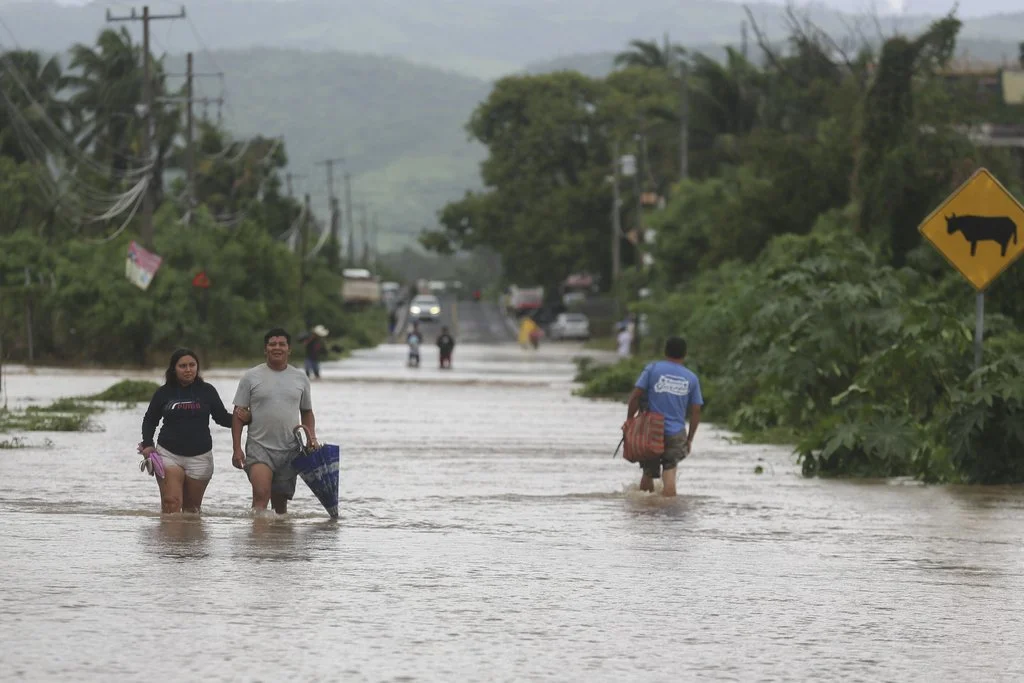“Zombie” Storm Hurricane John Demonstrates Potential Climate Change Impacts as it Continues to Ravage Mexico
Vehicles partially submerged on a flooded street in the aftermath of Hurricane John in Acapulco, Mexico, on Saturday, Sept. 28, 2024. (Photo: AP Photo/Alejandrino Gonzalez)
The death toll in Mexico from Hurricane John continues to rise. Initially labeled a Category Three storm, John made landfall on Mexico’s Pacific coast on Monday, Sept. 23 at approximately 9:15 pm CST. Before the inauguration of his successor, outgoing President Andrés Manuel López Obrador confirmed that as of Sunday, Sept. 29, the death toll had reached 15.
The National Weather Service announced that Hurricane John had become a “zombie” storm. The term was first coined in 2020 after Hurricane Paulette, which intensified again over the region following an initial downgrade to a low-pressure system. Like Paulette, “zombie” storm John had come back to life after an initial downgrade and once again pummeled the Mexican coast. John brought wind speeds of up to 105 mph, causing severe damage, including blown-off tin roofs, mudslides, toppled trees, and damaged infrastructure. The bulk of the destruction was due to heavy rainfall, with some areas receiving a year’s worth of rain in just a few days.
The city of Acapulco, which felt John’s impact despite the storm not making landfall there, was significantly affected, particularly its booming tourism industry. October is often touted as one of the best times to visit Acapulco, yet the Mexican Ministry of Tourism reported that hotel occupancy in the region has fallen to just 13 percent due to heavy rainfall, mudslides, and road closures.
Residents wade through a flooded street after Hurricane John passed through Acapulco, Mexico, on Friday, Sept. 27, 2024. (Photo: AP Photo/Bernardino Hernandez)
Mexico has yet to fully recover from Category Five Hurricane Otis, which made landfall in the country in October 2023 with even stronger winds than Hurricane John. The immense damage displaced nearly 1,300 people, forcing them to seek refuge in various shelters. The Mexican government has asked those with boats to assist stranded neighbors and expressed great concerns regarding both the quality and supply of drinking water, as well as the need to clear damaged roads.
Struck by the devastating damage of hurricanes John and Helene in the Southeastern United States, scientists point to climate change as the primary culprit behind the increasing intensity of tropical storms. Experts explain that warmer waters worsen these storms, as higher temperatures intensify evaporation and heat transfer. This process causes storms to pull in more water vapor and heat while traveling across the ocean, leading to stronger winds, heavier rainfall, flooding, and property damage. Rising sea levels also contribute to worsening storms, as seen in the destruction caused by storms like hurricanes Katrina and Sandy.
Mexico’s first female president, Claudia Steinbaum Pardo, was sworn into office on Tuesday, Oct. 1. A lifelong leftist and former mayor of Mexico City, Pardo won her election in a landslide, securing nearly 60 percent of the vote. Her immediate response to the hurricane showcased her commitment to the nation; Pardo visited affected areas to “support emergency personnel” and bring “essential goods to the people.” Onsite, she stressed the importance of safety and listened to residents who shared their experiences of the hurricane’s impact on their lives. As Mexico slowly begins the process of rebuilding, the nation grieves those who were lost.


